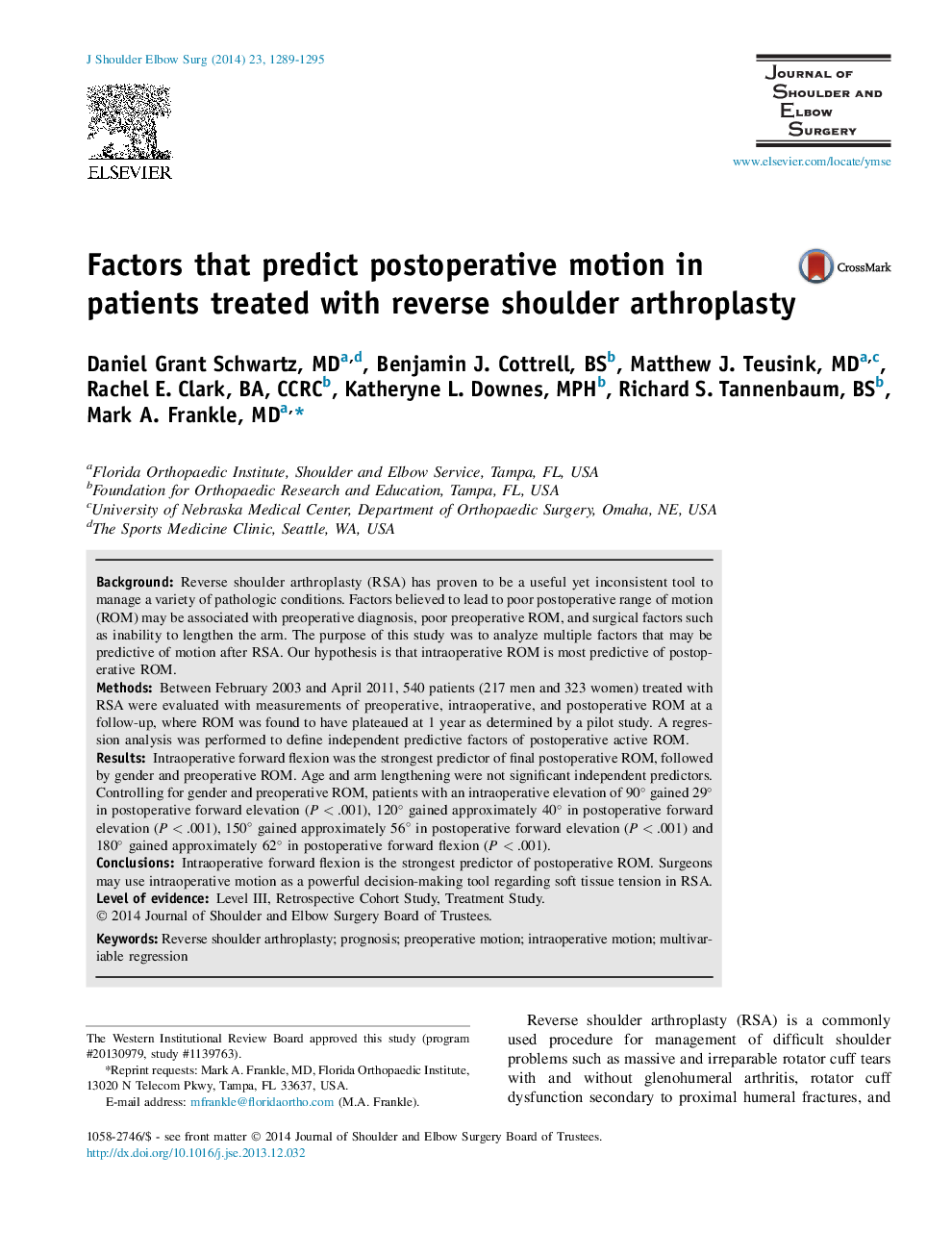| Article ID | Journal | Published Year | Pages | File Type |
|---|---|---|---|---|
| 4073537 | Journal of Shoulder and Elbow Surgery | 2014 | 7 Pages |
BackgroundReverse shoulder arthroplasty (RSA) has proven to be a useful yet inconsistent tool to manage a variety of pathologic conditions. Factors believed to lead to poor postoperative range of motion (ROM) may be associated with preoperative diagnosis, poor preoperative ROM, and surgical factors such as inability to lengthen the arm. The purpose of this study was to analyze multiple factors that may be predictive of motion after RSA. Our hypothesis is that intraoperative ROM is most predictive of postoperative ROM.MethodsBetween February 2003 and April 2011, 540 patients (217 men and 323 women) treated with RSA were evaluated with measurements of preoperative, intraoperative, and postoperative ROM at a follow-up, where ROM was found to have plateaued at 1 year as determined by a pilot study. A regression analysis was performed to define independent predictive factors of postoperative active ROM.ResultsIntraoperative forward flexion was the strongest predictor of final postoperative ROM, followed by gender and preoperative ROM. Age and arm lengthening were not significant independent predictors. Controlling for gender and preoperative ROM, patients with an intraoperative elevation of 90° gained 29° in postoperative forward elevation (P < .001), 120° gained approximately 40° in postoperative forward elevation (P < .001), 150° gained approximately 56° in postoperative forward elevation (P < .001) and 180° gained approximately 62° in postoperative forward flexion (P < .001).ConclusionsIntraoperative forward flexion is the strongest predictor of postoperative ROM. Surgeons may use intraoperative motion as a powerful decision-making tool regarding soft tissue tension in RSA.
